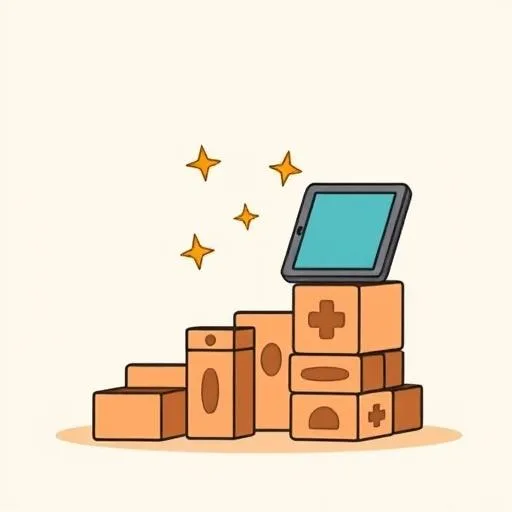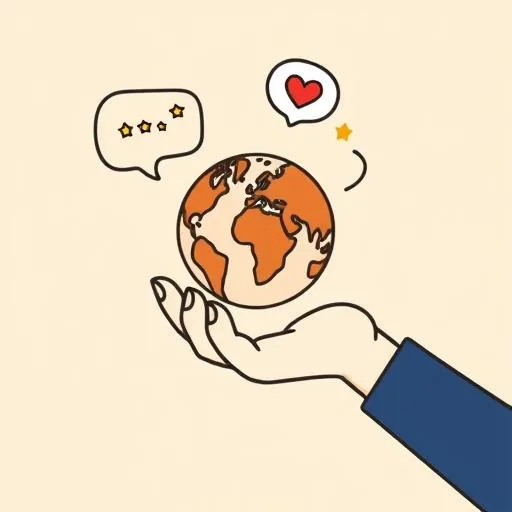
Have you ever watched your little one build something incredible with a simple set of blocks? One minute it’s a pile of wood, the next it’s a towering castle. It’s pure magic, happening right there in their hands. Lately, I’ve been thinking that our technology is finally starting to catch up to that kind of hands-on, self-contained brilliance. There’s a shift happening, moving incredible power from distant clouds right into the devices our kids hold, and honestly, it gets me SO excited for them. We’re talking about a future where their digital playgrounds are as safe and private as their own playroom.
What if Every Device Had a Tiny, Super-Smart Librarian Inside?

Okay, stick with me here. Imagine a librarian. Not just any librarian, but a super-fast, multilingual genius who lives inside your phone or tablet. This little wizard doesn’t need an internet connection to work its magic. It just *understands* things. That’s the simplest way I can describe something like Google’s new EmbeddingGemma. It’s a new kind of engine, designed to be small and efficient enough to run directly on our devices. This is HUGE!
Instead of sending your kid’s curious questions or creative ideas out into the vast, murky internet, the thinking happens right there on the device. Think about what this means. It’s like having a personal tutor that helps your child find information or organize their thoughts, but with a promise of absolute privacy. The ‘librarian’ helps them find the exact ‘book’ (or piece of information) they need from a library stored right on their tablet, without ever telling the outside world what they were looking for. For parents, that’s not just cool tech; it’s a massive sigh of relief. It’s technology that respects our family’s boundaries.
The Ultimate Privacy Win for Our Kids’ Digital World

Let’s be real—handing a device to our kids can feel like a leap of faith. We worry about what they’re seeing, who they’re interacting with, and where their data is going. This is where the ‘on-device’ part of EmbeddingGemma feels like a total game-changer. Because it runs locally, it helps ensure that sensitive user data—our kids’ data!—stays secure. It’s a powerful step toward creating genuinely safe digital spaces.
Imagine your daughter is using an app to create her own comic book. She’s inventing characters, writing silly dialogue, and dreaming up wild adventures. With this kind of technology powering the app, it could offer her creative suggestions—like a fun sound effect for a robot’s voice or a cool background for a space scene—all without her story ever leaving the tablet. It’s a self-contained creative ecosystem! This isn’t just a feature; it’s a foundational shift. It allows our kids to explore, create, and be wonderfully, messily themselves in a digital space that’s truly their own. That’s a future I can get behind with every ounce of my being!
A Universe of Languages in Their Little Hands

One of the most mind-blowing things about this little powerhouse is its ability to understand over 100 languages. ONE HUNDRED! As a family navigating multiple languages and cultures, this is just incredible. And as someone raising a bicultural child, the multilingual capabilities aren’t just technical—they’re bridges connecting different halves of our family identity. Way more than just translation!
In our family, we’re always balancing the fast-paced tech expectations of Canadian childhood with the traditional emphasis on education and respect we cherished growing up. This feels like the best of both worlds—technology that honors our values. Think about it! An educational app could help a child learning Korean to find stories that mirror the themes of an English book they love. Or, during a long trip, they could play a language game that works perfectly offline, helping them connect with their heritage in a way that feels like pure fun. According to research, EmbeddingGemma is designed to make state-of-the-art models accessible to everyone, deploying them in environments with limited resources. For our kids, this democratizes curiosity. It opens up a world of discovery, helping them see how beautifully interconnected our languages and stories truly are, all from the palm of their hand.
Sparking True Curiosity, Not Just Endless Scrolling

The best toys are the ones that don’t do everything for the child. They’re the ones that spark imagination and invite them to be the hero of their own story. I see this new wave of on-device technology in the same light. It’s not about creating more passive entertainment; it’s about building tools that fuel active exploration.
This is where concepts like Retrieval-Augmented Generation (RAG) come in, and it’s simpler than it sounds. It’s like giving a device a curated, kid-safe encyclopedia to draw from. So when your child asks, “Why do bees buzz?” the device can pull a simple, accurate, and safe answer from its internal knowledge base—no weird search results, no clicking on sketchy links. It transforms the device from a passive screen into an interactive partner in curiosity.
This empowers our kids to ask, to dig, to learn. We’re not just managing screen time; we’re shaping how they see technology—as a powerful tool for discovery. It’s about teaching them to be captains of their own learning adventure, with a trusty, private first mate right there on their device to help them navigate.
A More Hopeful, Human-Centered Tech for Our Families
So how does this translate to our busy family lives? Perhaps a morning when your child asks about dinosaurs before school—imagine their excitement getting instant, private answers that spark even more curiosity, all without ever leaving the safety of their device. Seeing technology evolve to be smaller, more private, and more personal feels like such a breath of fresh air. It’s easy to get caught up in the worries about the digital world, but breakthroughs like EmbeddingGemma are a powerful reminder that we can build a better future. A future where innovation serves our families, protects our privacy, and empowers our children’s creativity.
This isn’t about some far-off, futuristic dream. As Google developers note, this is designed to run directly on your hardware—the phones and tablets we already use. It’s about making the tools we have fundamentally better, safer, and more aligned with our values. It’s about giving our kids the best of what technology can offer—a boundless world for learning and creating—with the safety and peace of mind we all crave.
Ultimately, this isn’t just about smarter devices. It’s about giving our kids permission to explore, create, and ask big questions—knowing they have a secure digital playground that grows with them. What if we stopped worrying about screen time and started celebrating screen smarts? That’s a future worth embracing with open arms. And that, more than anything, feels like an incredible win.
Source: Introducing EmbeddingGemma: The Best-in-Class Open Model for On-Device Embeddings, Google Developers, 2025/09/06 05:47:02
